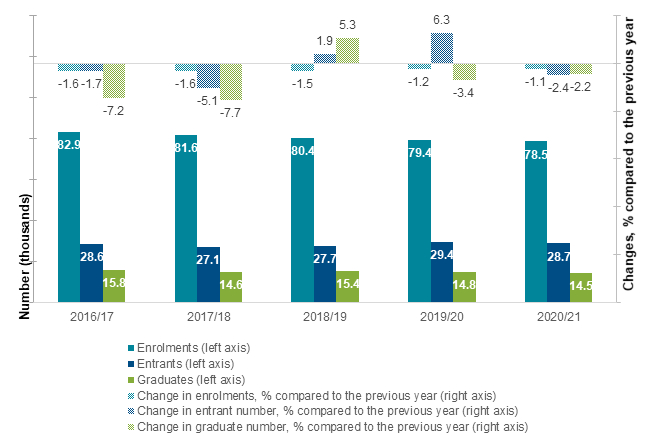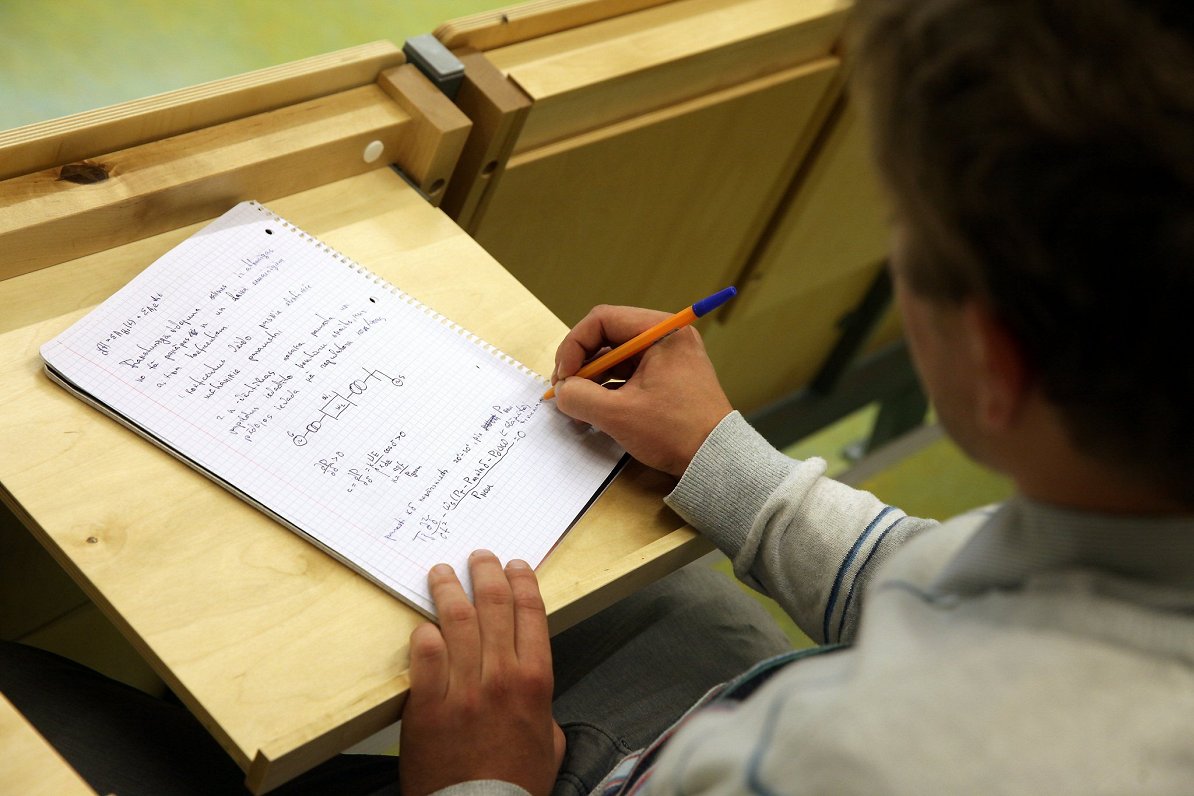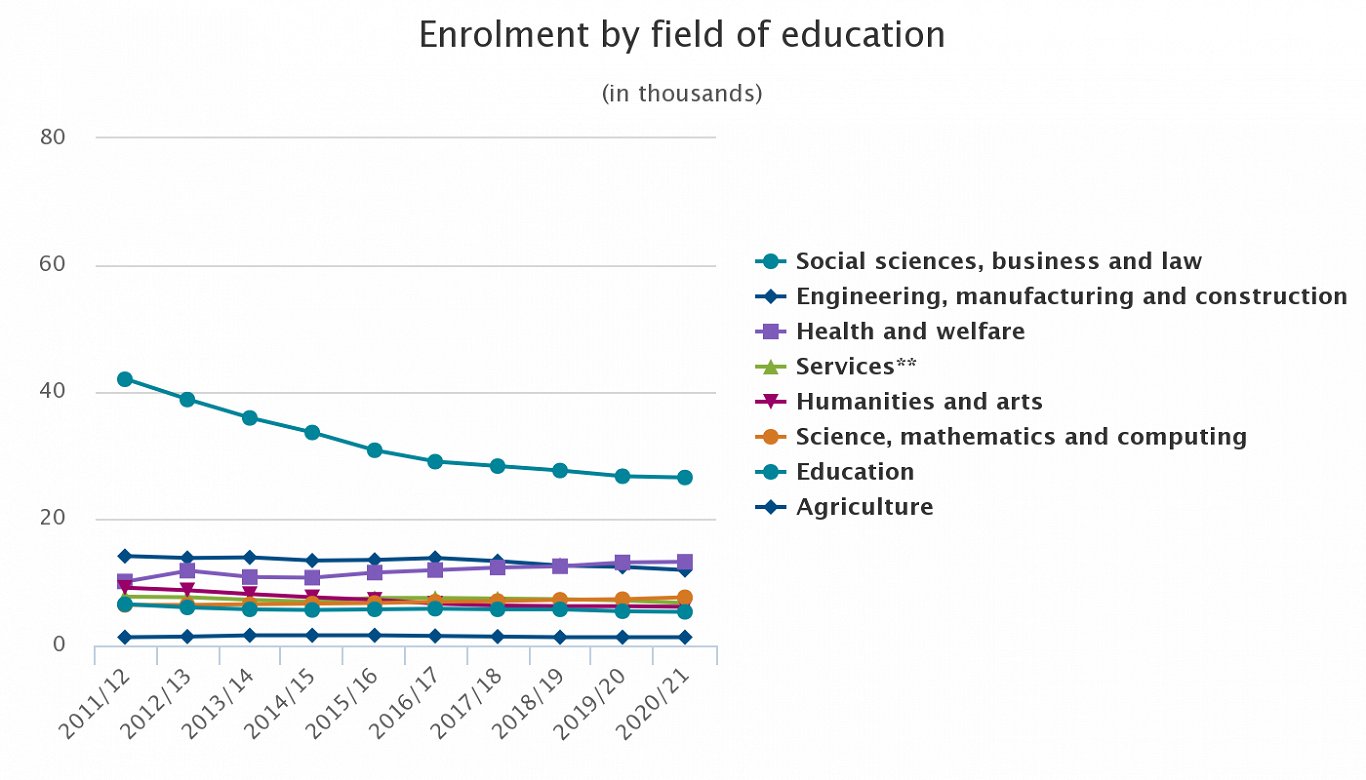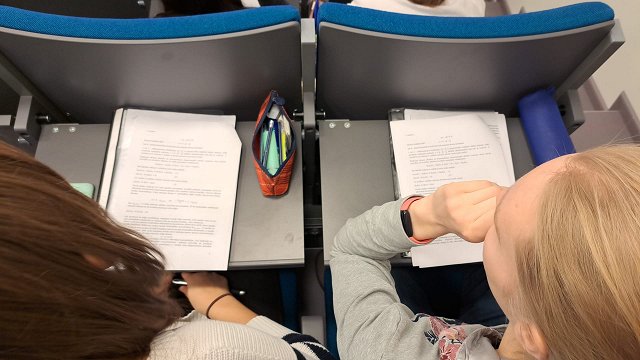After a significant increase in the previous year, the entrant number has also decreased.
In the academic year 2020/2021, 28.7 thousand students entered Latvian higher education institutions, which is a drop of 2.4 %, compared to the year before. Half of the entrants (51.6 %) have started studies in bachelor's level programs, 24.8 % - in master's level programs, 21.7 % - in college level programs, and 1.9 % - in doctoral level programs.
Females still constitute majority of the entrants – 16.3 thousand students or 56.7 % of the higher education institution entrants. Studies of more than a half of the entrants (56.1 %) were non-subsidized, and studies of 43.9 % of students were state-subsidized.
Change in the number of entrants, enrolments and graduates with degree or qualification

In this academic year there has been a decrease in the number of mobile students. Mobile students are persons who have acquired their previous education outside Latvia and are studying in Latvia with the aim of obtaining higher education (a degree or qualification). The number of these students has tended to increase significantly in recent years. For the first time, a significant decrease is observed specifically in the number of mobile students – entrants - this year 3.7 thousand or 26.6 % less than a year ago started their studies. At present, a total of 10 thousand mobile students study in Latvia, which is 1.2 % less than last year, but almost twice as many as in 2014, when statistics on mobile students were compiled for the first time.
The majority of mobile students (71.8 %) have completed their previous education in countries outside the European Union, and 7 out of 10 mobile students are men. More than half (56.7 %) of the total number of mobile students is formed by students that have acquired their previous education in India, Uzbekistan and Germany. Of all students who acquired their previous education in Germany, more than half (56.6 %) are women, while those who have previously studied in India and Uzbekistan, are mostly men (84.2 % and 81.1 %, respectively). The highest number of mobile students (2.4 thousand) is studying in Riga Stradiņš University.
**Services include: hotel, restaurant and catering, travel, tourism and leisure, sports etc.; transport services; environmental protection; security services (protection of persons and property, military and defence).
Similarly to the previous years, the majority of the first-year students - 10.2 thousand entered programmes of social sciences, business and law, but in general, this proportion has tended to decrease slightly over the last 10 years. 4.5 thousand students or 15.7 % of the total number were enrolled in health and welfare programmes, while in the field of engineering, manufacturing and construction - 4.2 thousand or 14.7 %. This year, the largest increase in the number of enrolled students was observed in educational study programmes - 1.8 thousand students (6.1 %) chose to study under these programmes, which is 154 students more than last year.
Since 2017, the number of educational institutions has remained unchanged - studies are conducted in 54 higher education institutions (29 universities and 25 colleges). Almost half (49.4 %) of the total enrolments study at the three largest universities of Latvia (University of Latvia, Riga Technical University and Riga Stradiņš University). In total, the number of students in 17 educational institutions exceeds one thousand, while the number of students in 13 educational institutions (mainly colleges) is less than 200.
Compared to the previous academic year, the total number of students (78.5 thousand) has decreased by almost a thousand, while during the last five years - by 4.4 thousand or 5.3 %. 14.1 thousand students study in college level programmes, 44.2 thousand in bachelor level programmes, 18.2 thousand in master's level programmes, and 2 thousand students in doctoral level programmes. The largest number of students is still in social sciences, commercial sciences and law programmes, which are acquired by 26.5 thousand or a third of the total number of students, while in engineering, manufacturing and construction - 11.9 thousand or 15.2 %. The increase in the number of students is observed in health and welfare programmes, which this year are acquired by 13.2 thousand (16.8 %) students or by 11.4 % more than five years ago. At the same time, the number of students in science, mathematics and computing programmes, which are acquired by 7.6 thousand or 9.6 %, has increased by 4.1 %.
In the academic year 2020/2021, doctoral programmes are implemented by 20 higher education institutions in Latvia. There are currently 2 039 doctoral students, a third (32.9 %) in the social sciences, business and law, and almost 20 % in engineering, manufacturing and construction.
In 2020, degree or qualification was acquired by 14.5 thousand students, which is 2.2 % less than in the previous period. More than a third (36.4 %) or 5.3 thousand students obtained a degree in social sciences, business and law and 19.1 % or 2.8 thousand in health and welfare.
Since 2010, the number of graduates in Latvian higher education institutions has decreased almost twice.
Key indicators of higher education
|
|
2000/01 |
2005/06 |
2010/11 |
2018/19 |
2019/20 |
2020/21 |
|
Higher education institutions and colleges |
|
|
|
|
|
|
|
enrolments |
101 270 |
131 125 |
103 856 |
80 355 |
79 408 |
78 548 |
|
entrants |
32 950 |
43 826 |
31 012 |
27 652 |
29 399 |
28 700 |
|
graduates |
15 009 |
26 124 |
26 545 |
15 363 |
14 848 |
14 525 |






























